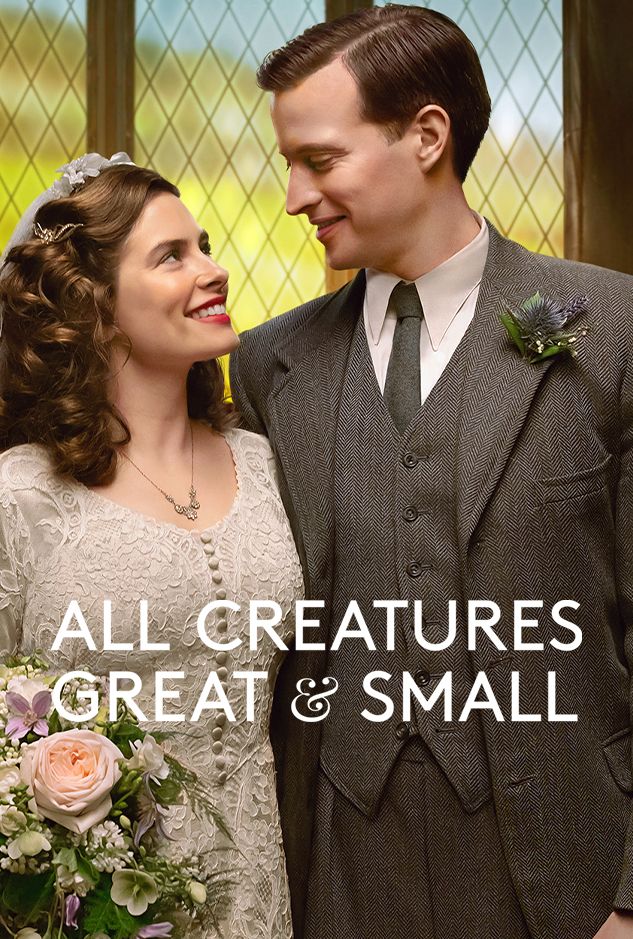A Guide to Jane Austen’s Novels
Over the course of less than a decade of her tragically short life, Jane Austen changed the literary world forever. Here’s our guide and timeline to all of Austen’s major published works in order of publication, including expert commentary and insight from Austen expert Devoney Looser, author of The Daily Jane Austen (2019) and The Making of Jane Austen (2017). Plus, find out when you may have seen adaptations of Austen’s famous works on MASTERPIECE in the past!
- 1.
1811: Sense and Sensibility

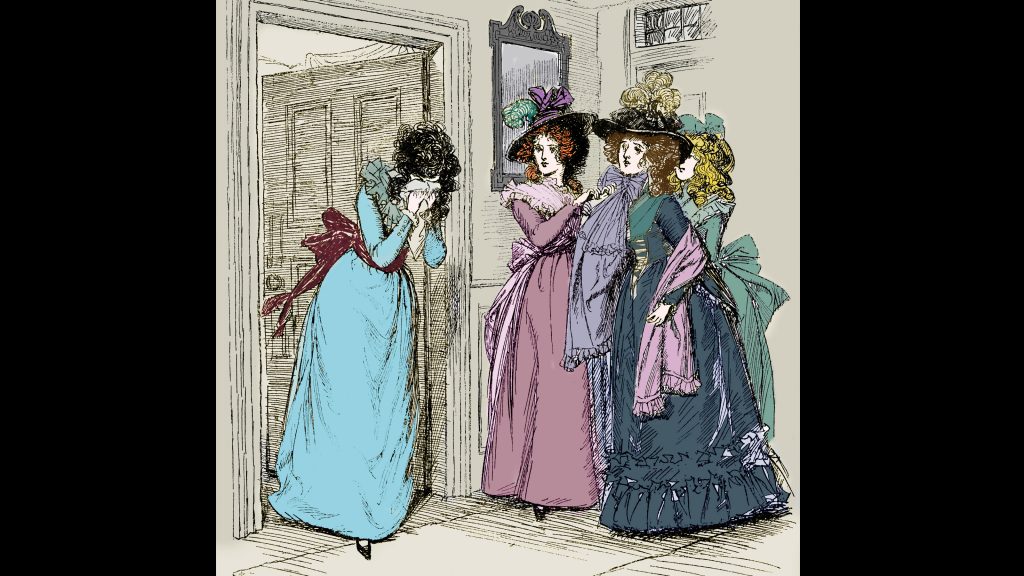
What It’s About: Sense and Sensibility tells the story of the Dashwoods, sisters Elinor and Marianne, and their romantic endeavors. Marianne wears her heart on her sleeve, plunging headfirst into love. Elinor, on the other hand, is cautious and cares about social convention.
Did You Know? When she was 35 years old, Jane Austen published Sense and Sensibility, her first major work, to critical acclaim and success. It was the first of her six published novels, four of which were published anonymously during her lifetime.
Austen Connections: “Austen published just one novel–her first novel, Sense and Sensibility (1811)—using the tagline, ‘By a Lady’,” explained Looser. “After that, she began to publish as ‘By the author of Sense and Sensibility’ and then ‘By the author of Sense and Sensibility and Pride and Prejudice,’ and so on. What this move suggests is that she wanted loyal readers to be able to follow her from one book to another and for each novel to advertise and affiliate with her others.”
The decision to publish anonymously wasn’t an uncommon one. “About half of all novels in this period were published with some form of anonymity,” Looser noted. “And some novelists started out publishing anonymously but then ended up putting their names on their works after the books gained acclaim, as late as the fourth or fifth edition. Had Austen lived longer than 1817, it’s possible that she would have decided to follow suit and put her name on her works as her own. It doesn’t seem likely, but it’s possible.”
Some Austen fans have wondered if the plot was based on Austen’s close-knit relationship with her sister Cassandra. “Jane Austen was incredibly close to her older sister Cassandra, so it’s not surprising that her fiction would explore the confidences and conflicts of sisters,” Looser said. “Readers have long wondered if Jane and Cassandra might have had opposite temperaments, just like Elinor and Marianne. There isn’t a lot of evidence for this theory, but the little we do have suggests something else. Older brother James Austen once wrote a poem to Jane, as the reputed author of Sense and Sensibility, saying he thought that she herself combined the strengths of the two oldest Dashwood sisters. He says Jane resembles Elinor in mind and Marianne in feelings. That’s a beautiful tribute to a sister, describing her as uniting the strengths of sense and sensibility. So perhaps in creating these characters, Jane Austen was drawing on two sides of her own personality.”
On MASTERPIECE: Fans may remember when Sense and Sensibility premiered in 2008 starring Dominic Cooper, Janet McTeer, Dan Stevens (Downton Abbey), Lucy Boynton and more.
[Illustration: “‘Sense and Sensibility’ by Jane Austen – Marianne coming hastily out of the parlour past Mrs. Dashwood and her two sisters.” Illustration by Hugh Thomson (1860-1920) , 1896.]
- 2.
1813: Pride and Prejudice

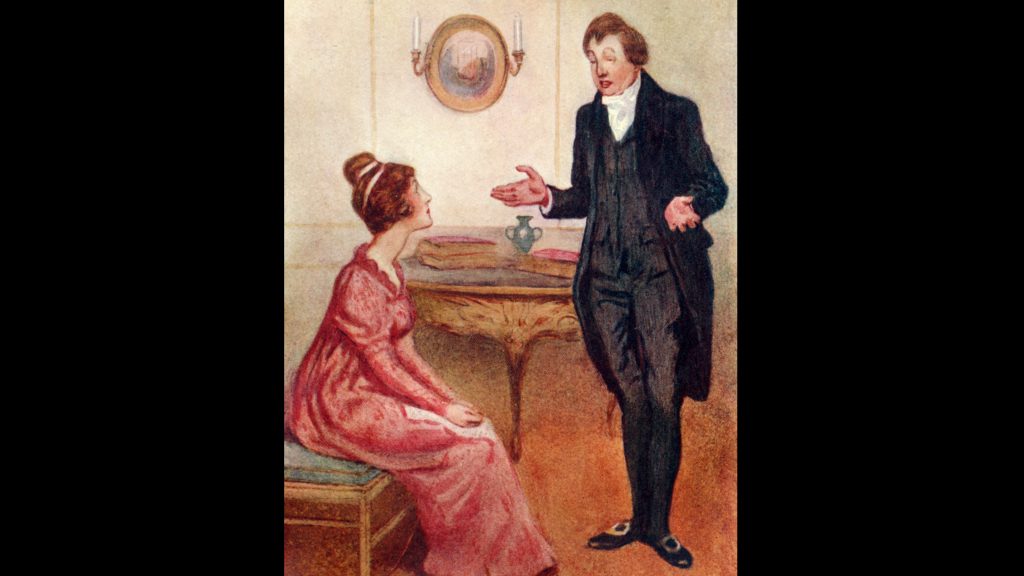
What It’s About: The renowned novel Pride and Prejudice tells the story of the Bennet family, consisting of five daughters whom Mrs. Bennet is anxious to see married off. The story focuses heavily on Elizabeth Bennet, and her complicated, turbulent romance with Fitzwilliam Darcy.
Did You Know? In October 1796 (at the age of 20), Austen first began writing First Impressions, that would later become Pride and Prejudice. She completed it in August 1797, and at the time, her father submitted it to a publisher with no luck. Not one to be deterred, Austen then worked on a version with extensive revisions, which was bought by a publisher in 1812, thanks to the success of her first novel. The novel, officially titled Pride and Prejudice, debuted in January 1813 to more critical acclaim and success.
Austen Connections: Rumor has it, Elizabeth Bennet was Austen’s favorite among all of her heroines. “I think we imagine her as Austen’s favorite heroine because of a line from Jane’s letter to Cassandra,” Looser explained. “Jane writes of her creation, Elizabeth Bennet, ‘I must confess that I think her as delightful a creature as ever appeared in print.’ Two centuries of readers agree!”
On Screen: Many adaptations of Pride and Prejudice have hit the big and small screens, but perhaps the most popular premiered in 1995 on BBC, famously starring Colin Firth, Jennifer Ehle and more—and was also penned by Sanditon (and Les Misérables) creator Andrew Davies! An earlier version was broadcast on MASTERPIECE in 1980.
[Illustration: “‘Pride and Prejudice’ by Jane Austen – portrait of Mr. Collins proposing to Elizabeth. Chapter XIX.” Illustration by British artist A. Wallis Mills (1878 – 1940). 1908.]
- 3.
1814: Mansfield Park

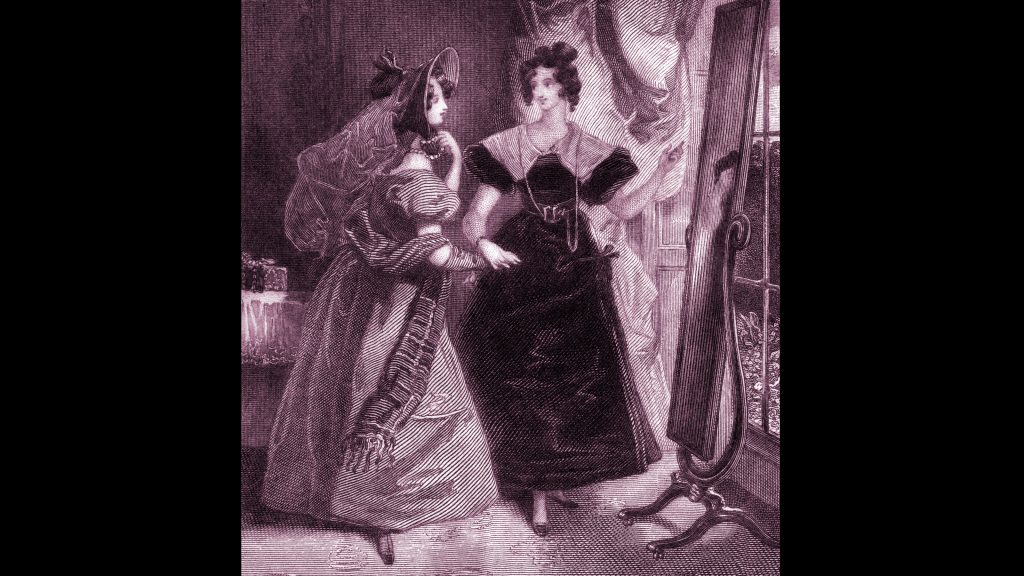
What It’s About: Mansfield Park tells the story of Fanny Price, a young woman whose family sent her to live with her wealthy (and unkind) aunt and uncle when she was just a child. The novel focuses on the romantic adventures of Fanny and those around her.
Did You Know? Austen had begun writing Mansfield Park in 1811, the very same year as the publication of Sense and Sensibility and her revision work on Pride and Prejudice. Then in 1813, Mansfield Park was completed and accepted for publication, on the heels of Pride and Prejudice’s publication just the year before.
Austen Connections: While many of Austen’s stories and characters have prompted speculation about real-life inspirations, Looser explains that it’s all just that—speculation—with the exception of one tidbit from Mansfield Park.
“I wouldn’t argue that any of Austen’s characters are based ‘for certain’ on real individuals. Still, it’s fun to speculate,” she said. “Austen’s naval brothers, Charles and Francis, would certainly have been inspirations for naval men in her novels [such as Persuasion]. There is one real-life connection between life and fiction. Charles bought each of his sisters, Jane and Cassandra, a piece of jewelry—topaz crosses. In Mansfield Park, William buys his sister Fanny a piece of jewelry—an amber cross. Readers have long been thrilled by this connection between life and fiction.”
Though Austen wasn’t officially identified by name on her books during her lifetime, after Mansfield Park was published, Austen’s identity was becoming something of an open secret, Looser explained. “She was publishing anonymously, but she was not unknown. Her brother Henry Austen even wrote about how Jane was invited to a literary evening by ‘a nobleman, personally unknown to her, but who had good reasons for considering her to be the authoress of that work’ and ‘was desirous of her joining a literary circle at his house.’ She turned down the invitation, but the fact that it came in the first place shows that her authorship was less private than we usually describe it to be.”
On MASTERPIECE: Back in 2007, an adaptation of Mansfield Park premiered on MASTERPIECE starring Billie Piper (Doctor Who), Hayley Atwell (Howard’s End, Captain America: The First Avenger) and more.
[Illustration: “‘Mansfield Park’ by Jane Austen – frontispiece.” Engraving after a painting by Pickering. 1833.]
- 4.
1816: Emma

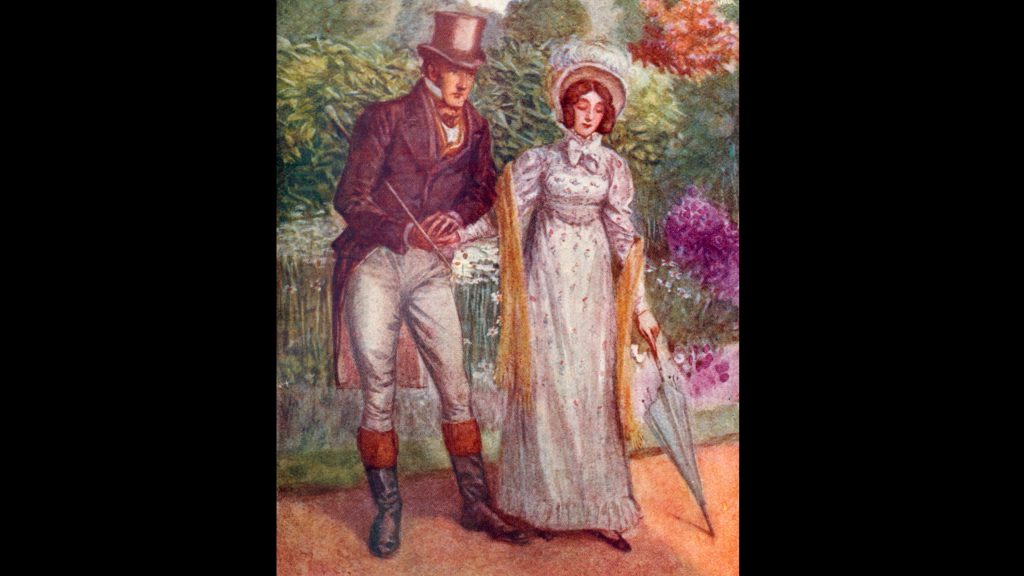
What It’s About: Austen’s fourth published novel tells the story the young, spoiled and lively Emma Woodhouse, who sometimes plays matchmaker in her small, fictional village and enjoys meddling in the lives of others, but she means well. According to the Jane Austen Society of North America (JASNA), even Austen herself is supposed to have said that she expected that Emma would be “a heroine whom no one but myself will much like.”
Did You Know? Emma, Austen’s final published work during her lifetime (and written before her severe decline in health), was completed and published in late December 1815.
Austen Connections: Emma was—somewhat begrudgingly—dedicated to the Prince Regent George Augustus Frederick, later King George IV. “In 1815, Austen was in contact by letter with, and then met in person, the Royal Librarian, James Stanier Clarke. He suggested that she might dedicate her next novel to the Prince Regent,” Looser said. “But Austen is said to have been confused about Clarke’s ‘suggestion’ that she dedicate a novel the Prince Regent. He was widely reviled at the time as a profligate and not a favorite with her by any means. When such an invitation to dedicate came from a prince, the invitation was not an invitation but a command. She prefixed to her novel, Emma, what many read as a highly tepid dedication to the Prince Regent. The Austen scholar Peter Sabor calls it ‘what amounts to an anti-dedication,’ due to its lack of enthusiasm, bordering on contempt. That seems to me to get it about right.”
The dedication to the Prince Regent read: “To His Royal Highness The Prince Regent, This Work Is, By His Royal Highness’s Permission, Most Respectfully Dedicated, By His Royal Highness’s Dutiful And Obedient Humble Servant, The Author.”
On MASTERPIECE: Emma premiered on MASTERPIECE in 2009, starring Michael Gambon (Harry Potter, Gosford Park), Romola Garai (The Miniaturist) and more.
[Illustration: “‘Emma’ by Jane Austen – portrait of Emma and Mr. Knightley in the garden.” Illustration by British artist A. Wallis Mills (1878 – 1940). 1910.]
- 5.
1818: Northanger Abbey and Persuasion

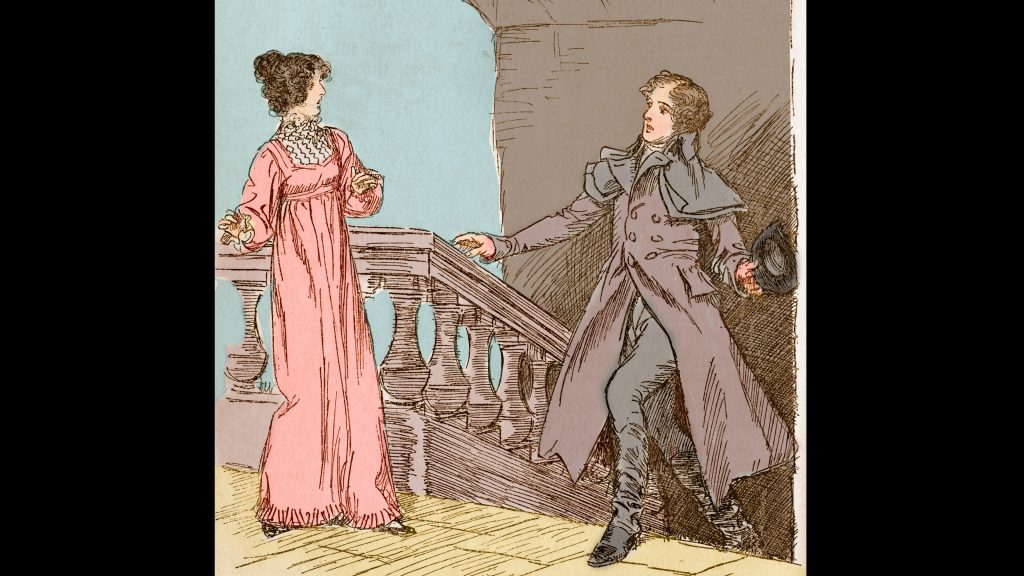
What They’re About: Northanger Abbey tells the coming-of-age story of heroine Catherine Morland, a young and naive girl determined to see the best in other, and her journey to better understanding the world around her.
Persuasion tells the story of Anne Elliot, a young woman who, as fate would have it, finds herself once again connected to the man she was once engaged to, after seven years of no contact.
Did You Know? Both Northanger Abbey and Persuasion were published together posthumously, five months after Austen’s untimely death on July 18, 1817 at the age of 41. The cause of her death has long been debated, but many have speculated the cause to perhaps be Addison’s Disease, cancer or tuberculosis. It was only after her death that her identity as a published author was revealed to the public.
Austen Connections: Despite the fact that they were published months after her death, Looser explains that Austen most likely intended for them to be published, and her family was fulfilling that wish for her. “There’s every indication that Austen intended for Persuasion and Northanger Abbey to be published,” she said. “In 1803, she’d sold the copyright to an earlier version of Northanger Abbey to a publisher, for ten pounds, under the title Susan: A Novel in Two Volumes. Then, for mysterious reasons, likely related to his own financial problems, the publisher neglected to print it.
“Persuasion wasn’t sold to a publisher before her death, but it also shows every sign of having been prepared for the press. Both novels were shorter than her previous works, so her family agreeing to publish them together as a set, just a few months after she died, was a practical choice.”
On MASTERPIECE: An adaptation of Northanger Abbey arrived on MASTERPIECE in 2008, starring Academy Award nominated actress Felicity Jones (The Theory of Everything, Rogue One: A Star Wars Story). A previous adaptation of the novel aired in 1987. Also in 2008, an adaptation of Persuasion starring two-time Academy Award nominee Sally Hawkins (The Shape of Everything) debuted.
[Illustration: “Jane Austen’ s novel ‘ Northanger Abbey’ – First published 1817.” Caption reads: ‘Mr Tilney!’ she exclaimed.’ edition illustrated by Hugh Thomson 1897.]
- 6.
Unfinished in 1817: Sanditon

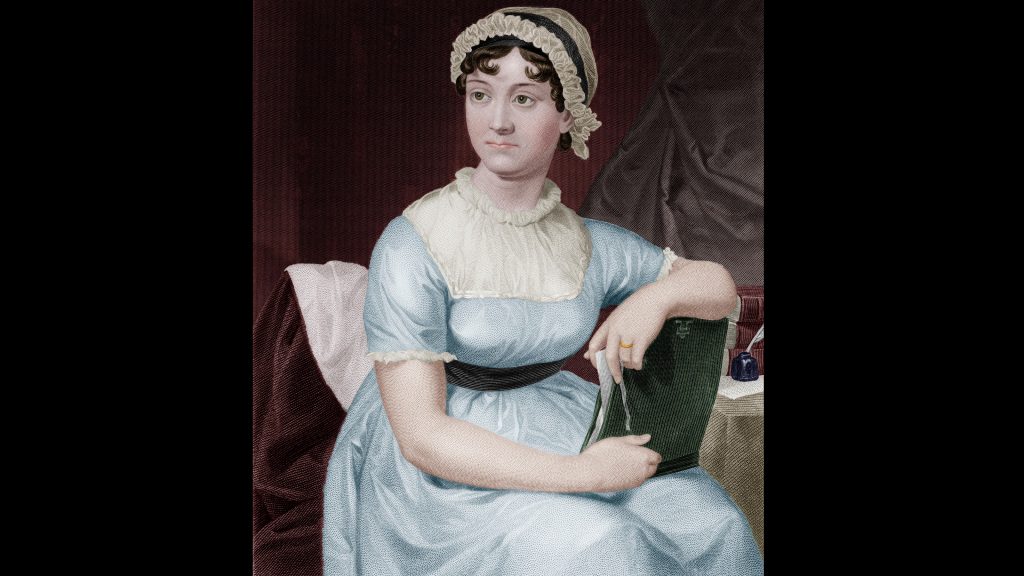
What It’s About: A young girl named Charlotte Heywood happens to be in the right place at the right time to help a couple in travel distress named Tom and Mary Parker. In their gratitude, the Parkers invite Charlotte to travel with them to Sanditon, a new seaside resort for health and wellness that Tom has given everything to build.
Did You Know? Just before her death, Austen penned 11 full chapters and one 12th incomplete one of Sanditon, the tale of a budding seaside resort and the intriguing characters who live there, but the novel was, unfortunately, never finished by Austen. Instead, numerous authors over the years have attempted their own completions of the Austen fragments—and most recently, renowned screenwriter Andrew Davies took on the task.
Austen Connections: “It’s not surprising that Sanditon is hyper-focused on health and illness, written as it was in 1817, the last year of her life, when Jane Austen’s own health was declining,” Looser explained. “Her own deteriorating health must have informed what she was writing then. How could it not? She would have had visits from doctors. She probably had to listen to suggestions from everyone around her about what was wrong with her, and what she should try to do, or eat, or take–or not do, not eat, or not take–for a cure.
“What’s amazing is that, in the face of her own weakening condition, she could still make fun of people who dispensed such advice with such confidence. She was even creating comic characters who exaggerated their own symptoms and the severity of their illnesses. That Austen could create a young male character who declares himself an invalid, with a weak stomach, while he stuffs his face with buttered toast and drinks thick cocoa, is absolutely hilarious. It shows that even when she was enduring declining health—at least through an early portion of her illness—she maintained an impeccable sense of humor about life’s embodied difficulties and absurdities.”
On MASTERPIECE: Sanditon, starring Theo James, Rose Williams and more, is now airing on Sundays at 9/8c on MASTERPIECE on PBS.
Devoney Looser, author of The Daily Jane Austen (2019) and The Making of Jane Austen (2017), is the Foundation Professor of English at Arizona State University. Visit her website to learn more, and follow her on Twitter.












